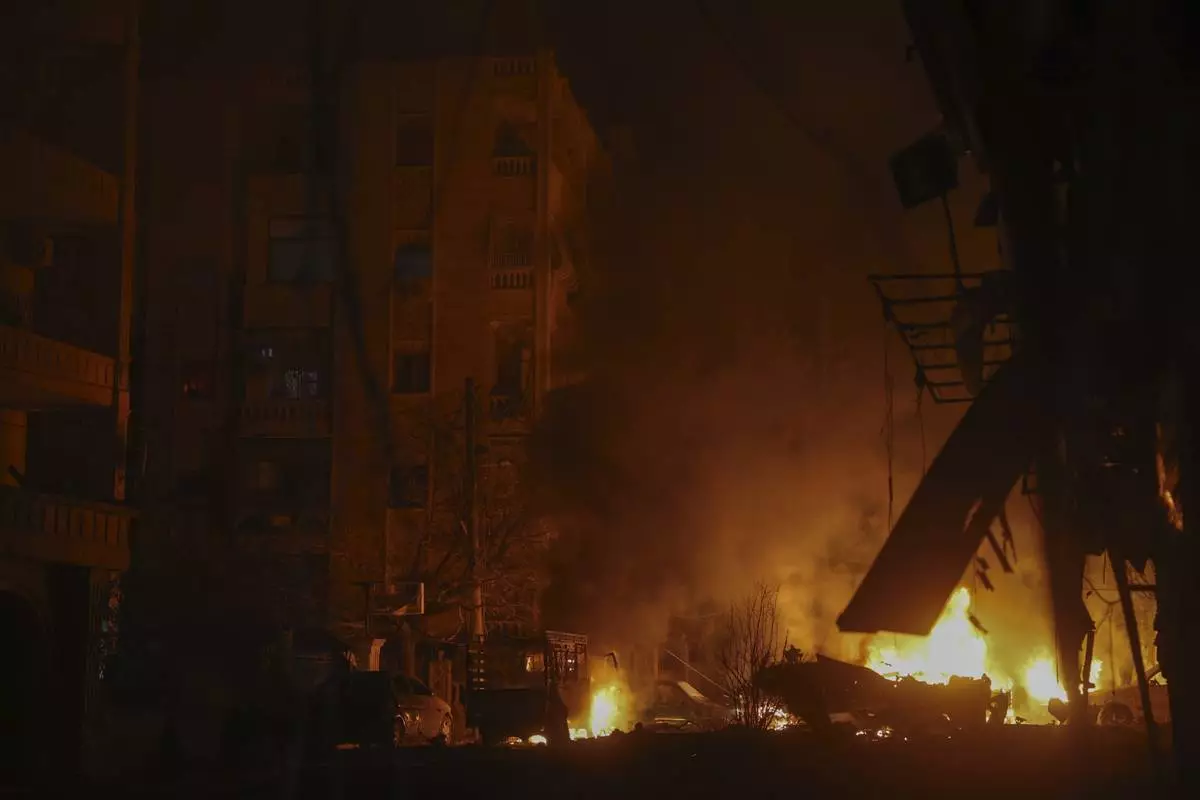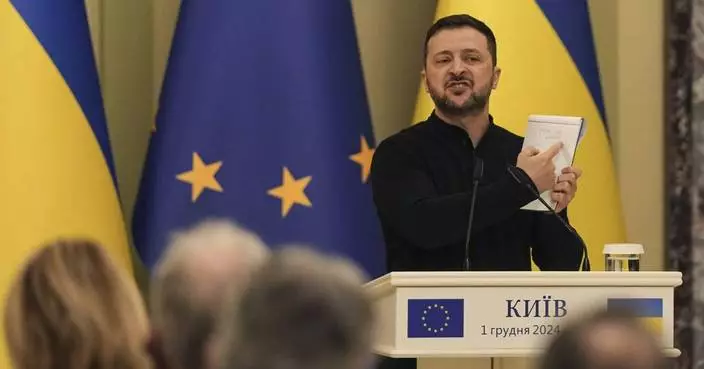SAN FRANCISCO--(BUSINESS WIRE)--Dec 2, 2024--
The EVERY Company (“EVERY”), a leader in crafting highly functional protein ingredients, has been awarded $2M from the US Department of Defense to explore US-based manufacturing.
This press release features multimedia. View the full release here: https://www.businesswire.com/news/home/20241127947503/en/
The award will be used to conduct a feasibility assessment of a US site to manufacture EVERY’s two core proteins: a highly soluble protein designed for protein-boosting, and ovalbumin, designed for functional egg and egg white replacement for which it was recently granted a foundational patent.
The DoD’s investment is part of the Distributed Bioindustrial Manufacturing Program, which aims to increase US biomanufacturing capabilities in 5 critical areas for national security: fabrication, firepower, fitness, food, and fuel. “Investing in biomanufacturing will allow the United States to safeguard reliable domestic supply chains, reduce reliance on foreign imports, and establish itself as a leader in food technology, especially in the face of rising global challenges such as food insecurity, zoonotic disease risk, and climate change,” noted the Company’s CEO, Arturo Elizondo. EVERY has been manufacturing its proteins overseas in Europe and Asia – this Award will enable EVERY to expand its presence in its home country and strengthen US biomanufacturing.
As part of the award, EVERY will develop military use-cases for its proteins, chiefly using its soluble protein to deliver high-quality nutrition in high-density formats. “Our technology allows us to bring novel applications to market using our soluble protein. Imagine a glass of water that looks and tastes like water, but contains 20 grams of protein. That’s what our protein can do,” says Elizondo.
EVERY has demonstrated its process consistently at industrial >100,000L scale, obtained US FDA approval for all its proteins, and successfully commercialized its entire portfolio. “Our focus for the next 12 months will be on entering the mass market,” notes the CEO. “However, most of our customers require thousands of metric tons of product. This award will allow us to work towards expanding our production capacity to meet their needs.”
EVERY’s production process uses a fraction of the land and water required to produce conventional protein and utilizes US-grown corn as its primary feedstock, stimulating the US rural economy.
This announcement comes less than a month after EVERY was granted a pioneering patent covering the use of ovalbumin in a broad range of applications, and follows several partnership announcements with multinationals including Grupo Nutresa, Colombia’s largest food company, Grupo Palacios, the world’s #1 producer of Spanish omelets, and Unilever brand the Vegetarian Butcher.
About EVERY™:
EVERY™ is a San-Francisco-based food technology company on a mission to build a more secure and accessible global food system by supplying food and beverage companies with bio-identical protein ingredients made using precision fermentation.
EVERY’s line of innovative, FDA-approved ingredients includes OvoPro™ (ovalbumin, formerly EVERY EggWhite) which replaces the functionality of egg and egg whites in a range of applications, and OvoBoost™ (formerly EVERY Protein), a highly soluble, taste and texture neutral protein that can be used to fortify a wide variety of food and beverage products including coffees, juices, sodas, syrups, and baked goods.
For more on EVERY's B2B solutions transforming the food industry, visit EVERY.com.


EVERY’s soluble egg white protein, OvoBoost™ (Photo: Business Wire)
WASHINGTON (AP) — The 13-year civil war in Syria has roared back into prominence with a surprise rebel offensive during which they seized Aleppo, one of Syria's largest cities and an ancient business hub. The push is among the rebels' strongest in years in a war whose destabilizing effects have rippled far beyond the country's borders.
It was the first opposition attack on Aleppo since 2016, when a brutal air campaign by Russian warplanes helped Syrian President Bashar Assad retake the northwestern city. Intervention by Russia, Iran and Iranian-allied Hezbollah and other groups had allowed Assad to remain in power within the 70% of Syria under his control.
Insurgents led by jihadi group Hayat Tahrir al-Sham launched the two-pronged attack on Aleppo last week and moved into the countryside around Idlib and neighboring Hama province. The Syrian military has rushed reinforcements and launched airstrikes as they attempted to stall their momentum.
The surge in fighting has raised the prospect of another violent front reopening in the Middle East, at a time when U.S.-backed Israel is fighting Hamas in Gaza and Hezbollah in Lebanon, both Iranian-allied groups.
Robert Ford, the last-serving U.S. ambassador to Syria, pointed to months of Israeli strikes on Syrian and Hezbollah targets in the area, and to Israel’s ceasefire with Hezbollah in Lebanon last week, as factors providing Syria’s rebels with the opportunity to advance. Russia, Assad's main international backer, is also preoccupied with its war in Ukraine.
Here's a look at some of the key aspects of the new fighting:
Assad has been at war with opposition forces seeking his overthrow for 13 years, a conflict that's killed an estimated half-million people. The conflict started as one of the Arab Spring popular uprisings in 2011 against Arab dictators, before Assad's brutal response to what had been largely peaceful protests turned the conflict violent. Some 6.8 million Syrians have fled the country since then, a refugee flow that helped change the political map in Europe by fueling anti-immigrant far-right movements.
The roughly 30% of the country not under Assad is controlled by a range of opposition forces and foreign troops. The U.S. has about 900 troops in northeast Syria, far from Aleppo, to guard against a resurgence by the Islamic State. Both the U.S. and Israel conduct occasional strikes in Syria against government forces and Iran-allied militias. Turkey has forces in Syria as well, and has influence with the broad alliance of opposition forces storming Aleppo.
Coming after years with few sizeable changes in territory between Syria's warring parties, the fighting “has the potential to be really quite, quite consequential and potentially game-changing,” if Syrian government forces prove unable to hold their ground, said Charles Lister, a longtime Syria analyst with the U.S.-based Middle East Institute.
Risks include if militants with the Islamic State extremist group see the renewed fighting as an opening, Lister said. The Islamic State, a violently anti-Western and repressive organization, in 2014 notoriously declared a self-styled caliphate that seized parts of Syria and Iraq. The Islamic State's Syria and Iraq branch no longer controls any territory, and is not known to be playing a role in the current fighting. But is still a lethal force operating through sleeper cells in the two countries.
Ford said the fighting in Aleppo would become more broadly destabilizing if it drew Russia and Turkey — each with its own interests to protect in Syria — into direct heavy fighting against each other.
The U.S. and U.N. have long designated the opposition force leading the attack at Aleppo — Hayat Tahrir al-Sham, known by its initials HTS — as a terrorist organization.
Abu Mohammed al-Golani emerged as the leader of al-Qaida's Syria branch in 2011, in the first months of Syria's war. It was an unwelcome intervention to many in Syria's opposition, who hoped to keep the fight against Assad's brutal rule untainted by violent extremism.
Golani and his group early on claimed responsibility for deadly bombings, pledged to attack Western forces, confiscated property from religious minorities and sent religious police to enforce modest dress by women.
Golani and HTS have sought to remake themselves in recent years, focusing on promoting civilian government in their territory as well as military action, researcher Aaron Zelin noted. His group broke ties with al-Qaida in 2016. Golani cracked down on some extremist groups in his territory, and increasingly portrays himself as a protector of other religions. That includes last year allowing the first Christian Mass in the city of Idlib in years.
By 2018, the Trump administration acknowledged it was no longer directly targeting Golani, Zelin said. But HTS has allowed some wanted armed groups to continue to operate on its territory, and shot at U.S. special forces at least as recently as 2022, he said.
At the crossroads of trade routes and empires for thousands of years, Aleppo is one of the centers of commerce and culture in the Middle East.
Aleppo was home to 2.3 million people before the war. Rebels seized the east side of the city in 2012, and it became the proudest symbol of the advance of armed opposition factions.
In 2016, government forces backed by Russian airstrikes laid siege to the city. Russian shells, missiles and crude barrel bombs — fuel canisters or other containers loaded with explosives and metal — methodically leveled neighborhoods. Starving and under siege, rebels surrendered Aleppo that year.
The Russian military's entry was the turning point in the war, allowing Assad to stay on in the territory he held.
This year, Israeli airstrikes in Aleppo have hit Hezbollah weapons depots and Syrian forces, among other targets, according to an independent monitoring group. Israel rarely acknowledges strikes at Aleppo and other government-held areas of Syria.

A defaced portrait of Syrian President Bashar Assad lies on the ground in the town of Maarat al-Numan, southwest from Aleppo, Syria, Saturday Nov. 30, 2024. Thousands of Syrian insurgents have fanned out inside Syria's largest city Aleppo and large areas around previously controlled by the government with little resistance from troops.(AP Photo/Omar Albam)

Syrian opposition fighters drive by an abandoned Syrian army armoured vehicle on a highway in the outskirts of in Khan Sheikhoun, southwest of Aleppo, Sunday, Dec. 1, 2024. Syrian opposition insurgency launched a campaign on Wednesday with a two-pronged attack on Aleppo and the countryside around Idlib.(AP Photo/Ghaith Alsayed)

Syrian opposition fighters drive a seized seized Syrian army armoured vehicle near the town of Khan Assubul, Syria, southwest of Aleppo, Sunday, Dec. 1, 2024. Syrian opposition insurgency launched a campaign on Wednesday with a two-pronged attack on Aleppo and the countryside around Idlib.(AP Photo/Ghaith Alsayed)

The bodies of Syrian army soldiers and allied fighters lie next to a Syrian army vehicle after being allegedly killed in combat by opposition fighters in Aleppo, Syria, early Saturday Nov. 30, 2024. Thousands of Syrian insurgents have fanned out inside Syria's largest city Aleppo a day after storming it with little resistance from government troops.(AP Photo/Omar Albam)

Vehicles burn after an airstrike against opposition fighters in Aleppo, Syria, late Friday, Nov. 29, 2024. (AP Photo/Ghaith Alsayed)

Syrian opposition fighters ride in a truck in Talhiya, Idlib countryside, Syria, Friday, Nov. 29, 2024. (AP Photo/Ghaith Alsayed)

Opposition forces take control of areas outside Aleppo, Syria, Friday, Nov. 29, 2024. (AP Photo/Ghaith Alsayed)

Opposition forces take control of areas outside Aleppo, Syria, Friday, Nov. 29, 2024. (AP Photo/Ghaith Alsayed)



















